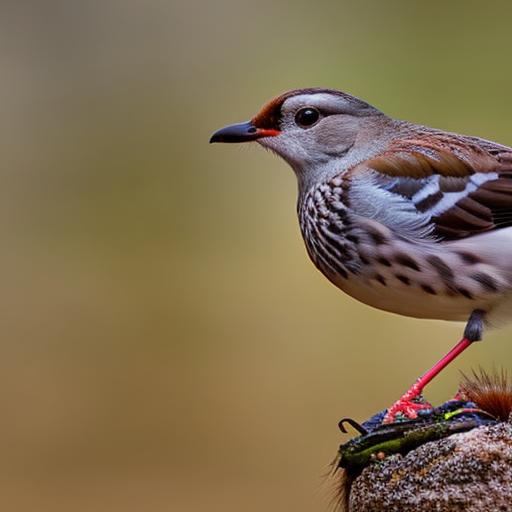Your cart is currently empty!

dove hunting necessities

Dove hunting is a popular outdoor activity that combines the thrill of the hunt with the opportunity to enjoy nature. It is a challenging and exciting sport that requires the right gear and knowledge to be successful. In this article, we will explore the essential gear needed for dove hunting, the importance of choosing the right shotgun and ammunition, the appropriate clothing and accessories, hunting licenses and regulations, the role of decoys, understanding dove behavior and habitat, tips for successful hunting, safety precautions, proper field care of dove meat, and conclude with a recap of essential knowledge for dove hunting.
Key Takeaways
- Essential gear for dove hunting includes a hunting vest, shooting glasses, and ear protection.
- When choosing a shotgun for dove hunting, consider the weight, gauge, and barrel length.
- Proper ammunition for dove hunting should be small and fast, such as #7.5 or #8 shot.
- Clothing and accessories for dove hunting should be comfortable and blend in with the environment.
- Before dove hunting, make sure to obtain a hunting license and understand local regulations.
Essential Gear for Dove Hunting
When it comes to dove hunting, having the right gear is crucial for a successful hunt. Some essential gear includes a shotgun, ammunition, shooting glasses, ear protection, a hunting vest or bag, and a cooler for storing harvested doves.
The shotgun is perhaps the most important piece of gear for dove hunting. It is recommended to use a 12 or 20 gauge shotgun with a modified or improved cylinder choke. This allows for a wider shot pattern and increases the chances of hitting fast-flying doves.
Ammunition is another crucial aspect of dove hunting gear. It is recommended to use 7 1/2 or 8 shot size for dove hunting. These shot sizes provide enough pellets to increase the chances of hitting a fast-moving target without damaging the meat.
Shooting glasses are essential for protecting your eyes from any debris or pellets that may be flying around during the hunt. Ear protection is also important to protect your hearing from the loud noise of the shotgun.
A hunting vest or bag is necessary for carrying extra ammunition, water, snacks, and other essentials during the hunt. A cooler is needed to store harvested doves and keep them fresh until they can be cleaned and prepared.
Choosing the Right Shotgun for Dove Hunting
Choosing the right shotgun for dove hunting is crucial for a successful hunt. There are several factors to consider when selecting a shotgun, including gauge, weight, barrel length, and choke.
The gauge refers to the diameter of the shotgun’s bore. The most common gauges for dove hunting are 12 and 20 gauge shotguns. The 12 gauge is more powerful and has a larger shot capacity, while the 20 gauge is lighter and has less recoil. Both gauges are suitable for dove hunting, so it ultimately comes down to personal preference.
The weight of the shotgun is another important factor to consider. A lighter shotgun is easier to carry and maneuver, especially during long hunting trips. However, a heavier shotgun may provide more stability and absorb recoil better.
Barrel length is also a consideration when choosing a shotgun for dove hunting. A shorter barrel length, typically around 26 inches, allows for better maneuverability in dense cover. However, a longer barrel length, around 28-30 inches, provides a longer sighting plane and can improve accuracy.
The choke of the shotgun determines the spread of the shot pattern. For dove hunting, it is recommended to use a modified or improved cylinder choke. These chokes provide a wider shot pattern, increasing the chances of hitting fast-flying doves.
Some recommended shotguns for dove hunting include the Remington 870, Browning Citori, Beretta A400 Xplor, and Benelli Montefeltro. These shotguns are known for their reliability, durability, and performance in the field.
Importance of Proper Ammunition
Using the proper ammunition is crucial for dove hunting success. There are different types of ammunition suitable for dove hunting, including lead shot and steel shot.
Lead shot is the traditional choice for dove hunting and provides excellent performance. It is available in various sizes, with 7 1/2 or 8 shot size being the most commonly used for dove hunting. These shot sizes provide enough pellets to increase the chances of hitting a fast-moving target without damaging the meat.
Steel shot is an alternative to lead shot and is required in some areas due to environmental regulations. Steel shot is harder than lead shot and has a different ballistic performance. It is important to check local regulations to determine if steel shot is required in your hunting area.
Shot size refers to the diameter of the individual pellets in the shotgun shell. The smaller the shot size number, the larger the pellets. For dove hunting, 7 1/2 or 8 shot size is recommended. These shot sizes provide a good balance between pellet count and energy transfer, increasing the chances of hitting a fast-moving target without damaging the meat.
Gauge refers to the diameter of the shotgun’s bore. The most common gauges for dove hunting are 12 and 20 gauge shotguns. Both gauges are suitable for dove hunting, so it ultimately comes down to personal preference.
Clothing and Accessories for Dove Hunting
Choosing the right clothing and accessories for dove hunting can enhance your hunting experience and increase your chances of success. It is important to dress appropriately for the weather conditions and wear clothing that provides camouflage and protection.
For dove hunting, it is recommended to wear lightweight and breathable clothing that allows for ease of movement. A camouflage pattern can help you blend into your surroundings and make it more difficult for doves to spot you.
A hat is essential for protecting your head from the sun and providing shade for your eyes. A wide-brimmed hat is recommended to shield your face and neck from the sun’s rays.
Comfortable and sturdy footwear is important for dove hunting, as you may be walking long distances or through uneven terrain. Boots or shoes with good traction are recommended to prevent slipping or tripping.
Accessories such as shooting gloves can provide extra grip and protection for your hands while shooting. Binoculars can be useful for scouting and locating doves in the distance. A shooting stick or bipod can provide stability and support when taking aim.
Hunting License and Regulations
Before embarking on a dove hunting trip, it is important to obtain the necessary hunting license and be familiar with the regulations in your area. Hunting license requirements vary by state and country, so it is important to check with your local wildlife agency for specific information.
In addition to a hunting license, some areas may require a migratory bird stamp or permit specifically for dove hunting. These stamps or permits help fund conservation efforts and ensure sustainable hunting practices.
Dove hunting regulations may include restrictions on bag limits, shooting hours, and hunting seasons. Bag limits refer to the number of doves that can be harvested per day or per season. Shooting hours typically begin at sunrise and end at sunset, but it is important to check local regulations for specific times.
Hunting seasons for doves vary by region and are typically set to coincide with the migratory patterns of the birds. It is important to know the opening and closing dates of the dove hunting season in your area to ensure compliance with regulations.
The Role of Decoys in Dove Hunting
Decoys play an important role in dove hunting by attracting doves to a specific area and increasing the chances of a successful hunt. Decoys mimic the appearance of doves and can be placed on the ground or mounted on poles.
Decoys work by creating a visual stimulus that attracts doves to a specific location. They can be used in conjunction with other hunting techniques, such as calling or scouting, to increase their effectiveness.
There are different types of decoys available for dove hunting, including stationary decoys, spinning-wing decoys, and motion decoys. Stationary decoys are simple plastic or wooden decoys that are placed on the ground or mounted on poles. Spinning-wing decoys have rotating wings that mimic the motion of a dove in flight. Motion decoys have moving parts that create a lifelike appearance.
The effectiveness of decoys can vary depending on various factors, including the location, weather conditions, and the behavior of the doves. It is important to experiment with different types of decoys and placement strategies to determine what works best in your hunting area.
Understanding Dove Behavior and Habitat
Understanding dove behavior and habitat is crucial for successful dove hunting. Doves are migratory birds that travel in flocks and have specific feeding and roosting habits.
Doves are primarily seed eaters and are attracted to areas with abundant food sources. They feed on a variety of seeds, including sunflower, millet, wheat, and corn. Finding areas with these food sources can increase your chances of locating doves.
Doves also require water sources for drinking and bathing. They are attracted to areas with water, such as ponds, lakes, rivers, or even small puddles. Locating areas with water nearby can increase your chances of finding doves.
Doves prefer open areas with clear lines of sight, such as fields, meadows, or open woodlands. They often perch on power lines or tree branches to survey their surroundings before descending to feed. Scouting these areas and identifying potential hunting spots can increase your chances of success.
Tips for Successful Dove Hunting
Successful dove hunting requires a combination of skill, strategy, and patience. Here are some tips to help maximize your chances of success:
1. Scout the area: Before the hunt, spend time scouting the area to locate potential dove hunting spots. Look for areas with abundant food sources, water sources, and clear lines of sight.
2. Set up early: Arrive at your hunting spot well before sunrise to set up decoys and get into position. Doves are most active during the early morning and late afternoon hours, so being in position early can increase your chances of success.
3. Use camouflage: Wear camouflage clothing and use natural cover to blend into your surroundings. Doves have keen eyesight and can easily spot movement, so it is important to remain still and hidden.
4. Practice shooting: Doves are fast-flying birds, so it is important to practice shooting moving targets. Set up a target range and practice shooting at clay pigeons or other moving targets to improve your accuracy and timing.
5. Be patient: Dove hunting requires patience and persistence. Doves can be unpredictable and may fly erratically, so it is important to remain focused and patient.
6. Shoot in front of the bird: When shooting at a dove in flight, aim slightly ahead of the bird to account for its speed and movement. This will increase your chances of hitting the target.
7. Follow through: After pulling the trigger, continue to swing the shotgun through the target. This follow-through motion helps maintain accuracy and increases the chances of hitting the bird.
8. Stay hydrated and take breaks: Dove hunting can be physically demanding, especially during hot weather. It is important to stay hydrated and take breaks as needed to prevent fatigue.
Safety Precautions for Dove Hunting
Safety should always be a top priority when participating in any hunting activity. Here are some safety precautions to keep in mind while dove hunting:
1. Always treat firearms as if they are loaded: Never point a firearm at anything you do not intend to shoot, even if you believe it is unloaded. Treat every firearm as if it is loaded and keep the muzzle pointed in a safe direction at all times.
2. Be aware of your surroundings: Before taking a shot, always be aware of what is beyond your target. Ensure there are no people, buildings, or livestock in the line of fire.
3. Use ear and eye protection: The loud noise of a shotgun can damage your hearing, so it is important to wear ear protection. Shooting glasses can protect your eyes from any debris or pellets that may be flying around.
4. Communicate with other hunters: If hunting in a group, establish clear communication and know the location of other hunters. Use hand signals or verbal cues to indicate your presence and intentions.
5. Follow local regulations: Familiarize yourself with local hunting regulations and abide by them at all times. This includes bag limits, shooting hours, and any other restrictions specific to dove hunting.
6. Practice safe firearm handling: Always keep your finger off the trigger until you are ready to shoot. Keep the safety engaged until you are ready to fire. Never climb a tree or fence with a loaded firearm.
7. Be mindful of weather conditions: Be aware of weather conditions that may affect your safety, such as lightning storms or high winds. Seek shelter if necessary and avoid hunting in dangerous conditions.
Proper Field Care of Dove Meat
Proper field care of dove meat is essential to ensure its quality and taste. Here are some steps for cleaning and preparing dove meat:
1. Field dress the doves: After harvesting a dove, immediately field dress it by removing the feathers, head, and internal organs. This can be done by making a small incision near the breastbone and carefully removing the entrails.
2. Rinse the doves: Rinse the doves thoroughly with cold water to remove any dirt or debris. Pat them dry with paper towels.
3. Store the doves: Place the cleaned doves in a cooler with ice or ice packs to keep them fresh until they can be properly prepared.
4. Remove the breasts: To prepare the doves for cooking, remove the breasts by making a small incision along the breastbone and carefully cutting away the meat on either side.
5. Marinate or season the meat: Doves have a mild flavor and can benefit from marinating or seasoning. You can marinate the meat in a mixture of olive oil, vinegar, herbs, and spices for a few hours or overnight.
6. Cook the doves: Doves can be cooked in a variety of ways, including grilling, roasting, or pan-searing. They are best cooked to medium-rare or medium to prevent them from becoming tough and dry.
7. Enjoy the meal: Once cooked, serve the dove meat as a main course or incorporate it into recipes such as salads, pastas, or sandwiches. Doves have a rich and gamey flavor that pairs well with a variety of ingredients.
Dove hunting is an exciting and challenging outdoor activity that requires the right gear and knowledge for success. By having the essential gear, choosing the right shotgun and ammunition, wearing appropriate clothing and accessories, obtaining the necessary hunting license and being familiar with regulations, understanding dove behavior and habitat, following tips for successful hunting, practicing safety precautions, properly caring for dove meat, and enjoying the experience, you can have a rewarding dove hunting adventure. So grab your gear, head out to the field, and embrace the thrill of dove hunting!
If you’re an avid dove hunter, you know that having the right gear is essential for a successful hunt. From shotguns to decoys, there are several necessities that every dove hunter should have in their arsenal. However, one often overlooked aspect of dove hunting is understanding the behavior and patterns of these elusive birds. In a recent article by Old Oak Syndicate, they provide valuable insights on how to hunt pheasants effectively. This informative piece offers tips and techniques that can be applied to dove hunting as well, helping you improve your chances of a fruitful hunt. Check out the article here to enhance your dove hunting skills and increase your chances of a successful outing.
FAQs
What is dove hunting?
Dove hunting is a type of hunting where hunters shoot doves for sport or food.
What are the necessities for dove hunting?
The necessities for dove hunting include a shotgun, ammunition, hunting license, camouflage clothing, a hunting vest, a cooler, and a bird cleaning kit.
What type of shotgun is best for dove hunting?
A 12-gauge shotgun is the most commonly used shotgun for dove hunting.
What type of ammunition is best for dove hunting?
The best ammunition for dove hunting is 7 1/2 or 8 shot.
Do I need a hunting license to go dove hunting?
Yes, a hunting license is required to go dove hunting in most states.
Why do I need camouflage clothing for dove hunting?
Camouflage clothing helps hunters blend in with their surroundings and makes it harder for doves to spot them.
What is a hunting vest and why do I need one?
A hunting vest is a vest with pockets that hunters use to carry their ammunition, bird cleaning kit, and other necessities.
Why do I need a cooler for dove hunting?
A cooler is used to keep the doves fresh until they can be cleaned and prepared for cooking.
What is a bird cleaning kit?
A bird cleaning kit includes tools such as pliers, scissors, and a knife that hunters use to clean and prepare the doves for cooking.

Herb has been a longtime lover of the outdoors. Whether it be hunting, camping, fishing or just getting outside to reset. Proud father and animal lover. Bourbon anyone?

by
Tags:
Comments

Categories
- Big Game Hunting (301)
- Deer (202)
- Reviews (3)
- Shooting (16)
- Slingshot (1)
- Small Game Hunting (42)
- Upland Hunting (126)
- Waterfowl Hunting (3)





Leave a Reply